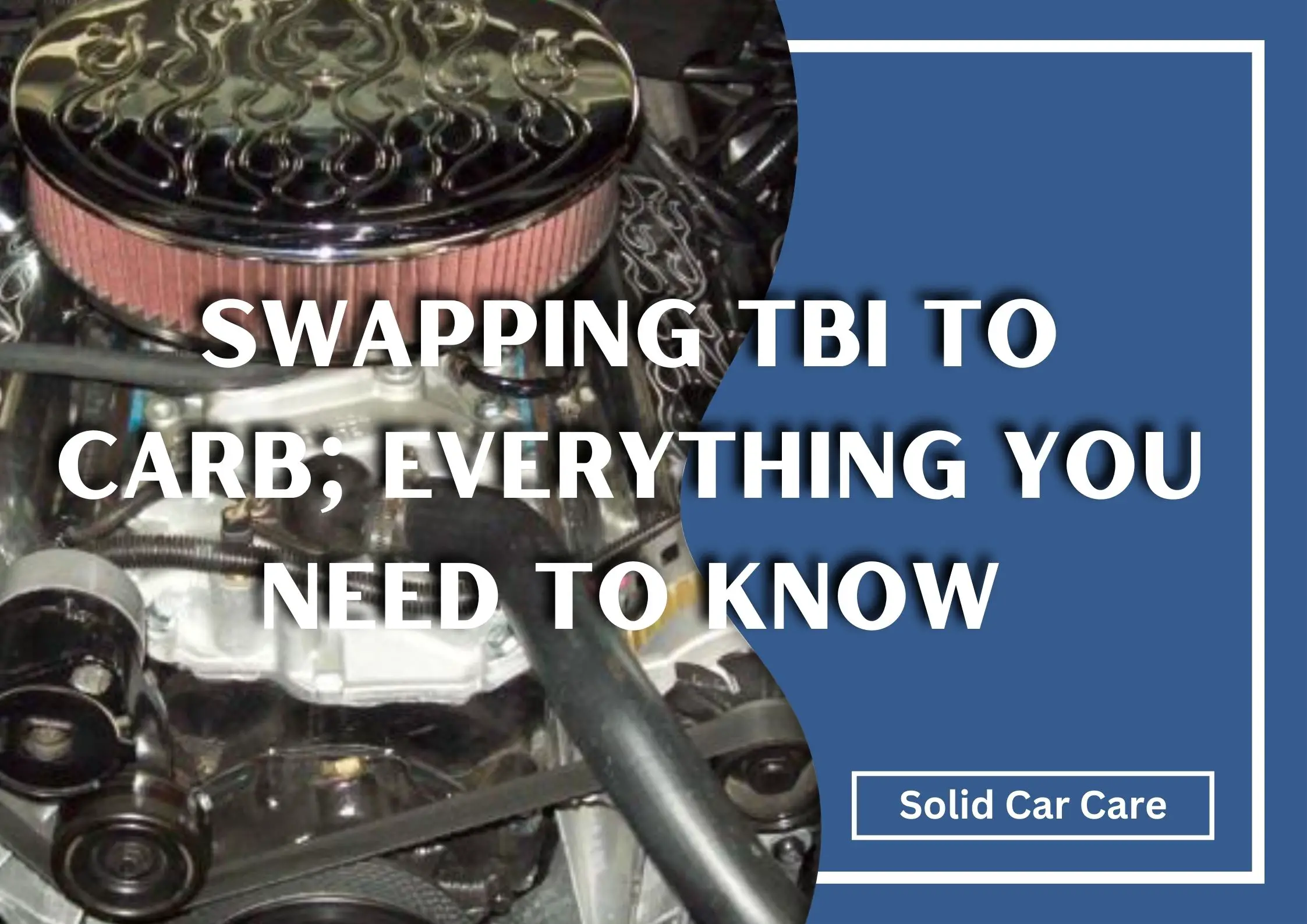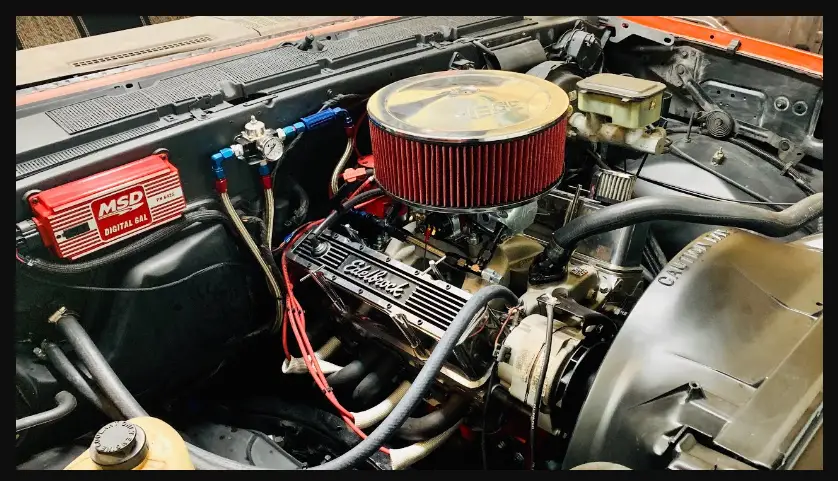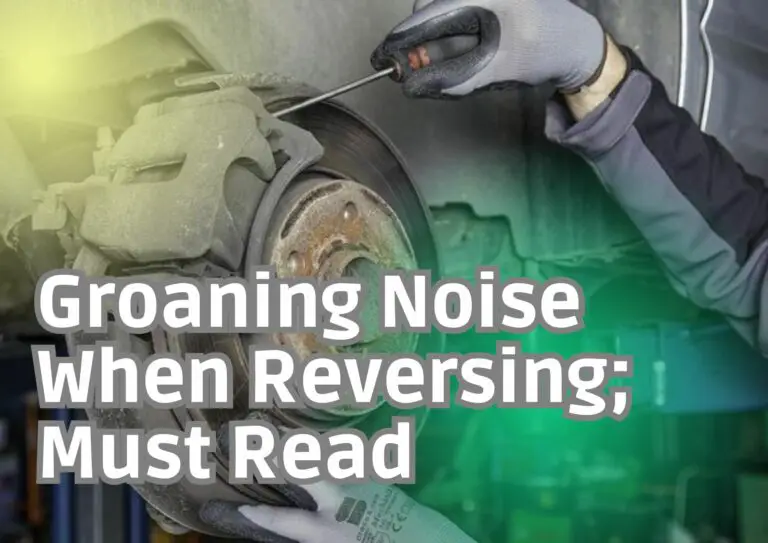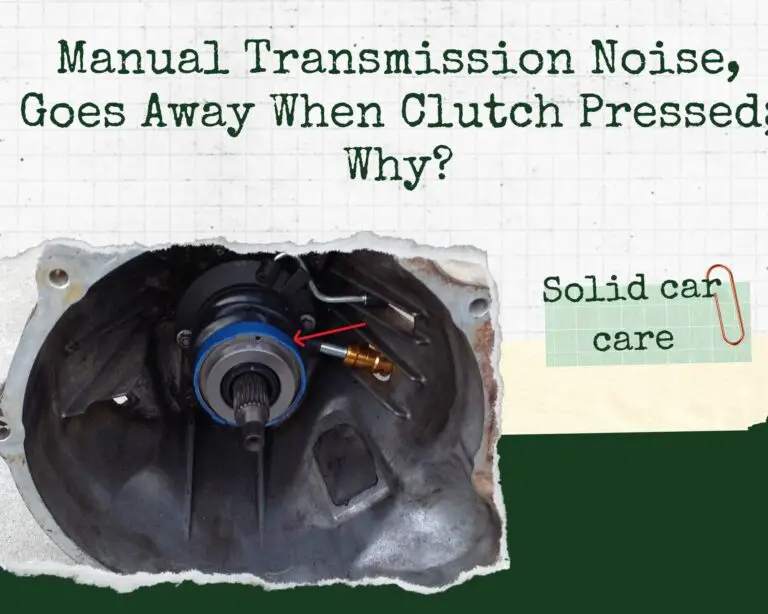Swapping TBI To Carb; Everything You Need To Know

Swapping TBI to Carburetor is a popular modification among car enthusiasts and mechanics alike. TBI (Throttle Body Injection) and carburetors are two fuel delivery systems that have been used in vehicles for many years.
- TBI is a type of fuel injection system that uses a single or multiple injectors mounted on a throttle body.
- Carburetors, on the other hand, use a mixture of air and fuel to create a combustible mixture that is delivered to the engine.
While both systems have their advantages and disadvantages, many people choose to swap TBI to carburetor for various reasons.
In this article, we will discuss the differences between TBI and carburetors, the advantages and disadvantages of each, and the steps involved in swapping TBI to carburetor.
Table of Contents
- Understanding TBI
- Understanding Carburetors
- Swapping TBI to Carburetor
- Pros and Cons of Swapping TBI to Carburetor
- Which is better TBI or carb?
- Do carbs make more power than EFI?
- Conclusion
Understanding TBI
TBI is a type of fuel injection system that uses a single or multiple injectors mounted on a throttle body. This system delivers fuel to the engine through an injector that is controlled by a computer. TBI is known for its simplicity and low cost, and it is used in many trucks and SUVs.
Some of the advantages of TBI include better fuel economy, smoother idle, and improved throttle response. However, TBI has some limitations, such as lower power output compared to other fuel injection systems.
Understanding Carburetors
Carburetors are a fuel delivery system that mixes air and fuel to create a combustible mixture that is delivered to the engine. Carburetors are known for their simplicity and low cost, and they have been used in vehicles for many years.
Some of the advantages of carburetors include improved throttle response, better low-end torque, and the ability to tune the system easily. However, carburetors have some limitations, such as lower fuel economy and emissions compared to fuel injection systems.
Swapping TBI to Carburetor

Swapping TBI to carburetor involves removing the TBI system and replacing it with a carburetor. The process may require some modifications to the engine, such as changing the intake manifold, fuel system, and ignition system.
The cost of swapping TBI to carburetor varies depending on the type of carburetor and the modifications required. Some common issues that may arise during the swapping process include fuel delivery problems, ignition timing issues, and poor drivability. It is important to seek professional help when swapping TBI to carburetor.
Can you convert carb to TBI? Step by Step guide
Here’s a step-by-step guide for swapping TBI to carburetor:
Step 1: Gather the necessary tools and equipment
Before starting the swapping process, gather all the necessary tools and equipment such as a carburetor, carburetor intake manifold, fuel lines, and a fuel pressure regulator.
Also, ensure that you have a service manual for your vehicle and that you have identified the appropriate carburetor for your engine.
Step 2: Remove the TBI system
To remove the TBI system, disconnect the battery and all electrical connections to the TBI. Next, remove the air cleaner, fuel lines, and throttle linkage.
Then, remove the TBI unit from the intake manifold by removing the bolts and gasket.
Step 3: Install the carburetor intake manifold
Install the carburetor intake manifold by bolting it onto the engine block. Ensure that the gasket is properly seated and aligned with the intake manifold ports.
Step 4: Install the carburetor
Install the carburetor onto the intake manifold, making sure that all the necessary mounting bolts are tight.
Attach the fuel lines and throttle linkage to the carburetor, and then install the air cleaner.
Step 5: Install the fuel pressure regulator
Install a fuel pressure regulator between the fuel pump and the carburetor. Adjust the fuel pressure to the recommended setting for your carburetor.
Step 6: Adjust the ignition timing
Adjust the ignition timing to the recommended setting for your carburetor. Use a timing light to ensure that the ignition timing is set correctly.
Step 7: Adjust the carburetor
Adjust the carburetor settings to ensure that the air-fuel mixture is correct. Start the engine and let it run for a few minutes before adjusting the idle speed and mixture screws.
Step 8: Test and fine-tune the system
Test drive the vehicle and check for any issues such as poor drivability, fuel delivery problems, or ignition timing issues. Fine-tune the system as needed until the vehicle runs smoothly.
Step 9: Enjoy your new carbureted engine
Once the swapping process is complete and the system is tuned correctly, enjoy the improved throttle response, low-end torque, and overall performance of your carbureted engine.
Note: Swapping TBI to carburetor can be a complex process and requires some mechanical expertise. It is recommended that you seek professional help or consult a service manual before attempting this modification.
What To Do If Gas Overflows While Pumping; Must Read
Solid Car Care
Pros and Cons of Swapping TBI to Carburetor
Swapping TBI to carburetor has some advantages and disadvantages. Some of the advantages include better throttle response, improved low-end torque, and the ability to tune the system easily.
Carburetors are also known for their simplicity and low cost compared to fuel injection systems. However, there are some disadvantages to consider, such as lower fuel economy and emissions, and the potential for poor drivability if not tuned correctly.
Which is better TBI or carb?

The answer to this question depends on the specific application and personal preferences.
Throttle body injection (TBI) and carburetors both have their pros and cons. TBI systems are generally more efficient and offer better fuel economy compared to carburetors. They also tend to have better throttle response and are easier to start in cold weather. TBI systems can also be more reliable in certain situations since they have fewer moving parts compared to a carburetor.
However, carburetors are known for their simplicity and ease of use. They can still provide good power output, especially in high-performance applications. Carburetors are also easier to modify and adjust than TBI systems, which can be more complex and require specialized tools.
Ultimately, the choice between TBI and carburetor will depend on your specific application and personal preferences. For example, if you are looking for better fuel economy and reliability, TBI may be the better choice. On the other hand, if you want simplicity and ease of modification, a carburetor may be the way to go.
Do carbs make more power than EFI?
In general, electronic fuel injection (EFI) systems are considered to be more efficient and offer better performance compared to carburetors. This is because EFI systems can more precisely control the fuel delivery to the engine, resulting in better fuel economy and improved power output.
Carburetors, on the other hand, are known for their simplicity and ease of use. They can still provide good power output, especially in high-performance applications, but they tend to be less efficient and may require more maintenance.
However, it’s worth noting that the performance difference between EFI and carburetors can depend on various factors, including the specific system being used, the engine setup, and the application. Some carburetors may outperform certain EFI systems in specific applications or setups, while others may not.
Driver Side Heated Seat Not Working: Causes and Fixing Explained
Solid Car Care
Conclusion
Swapping TBI to carburetor is a modification that can offer some benefits to car enthusiasts and mechanics. While both TBI and carburetors have their advantages and disadvantages, swapping TBI to carburetor may be an option for those looking for improved throttle response, low-end torque, and a simpler fuel delivery system. However, it is important to consider the pros and cons of this modification and seek professional help when performing the swap.






